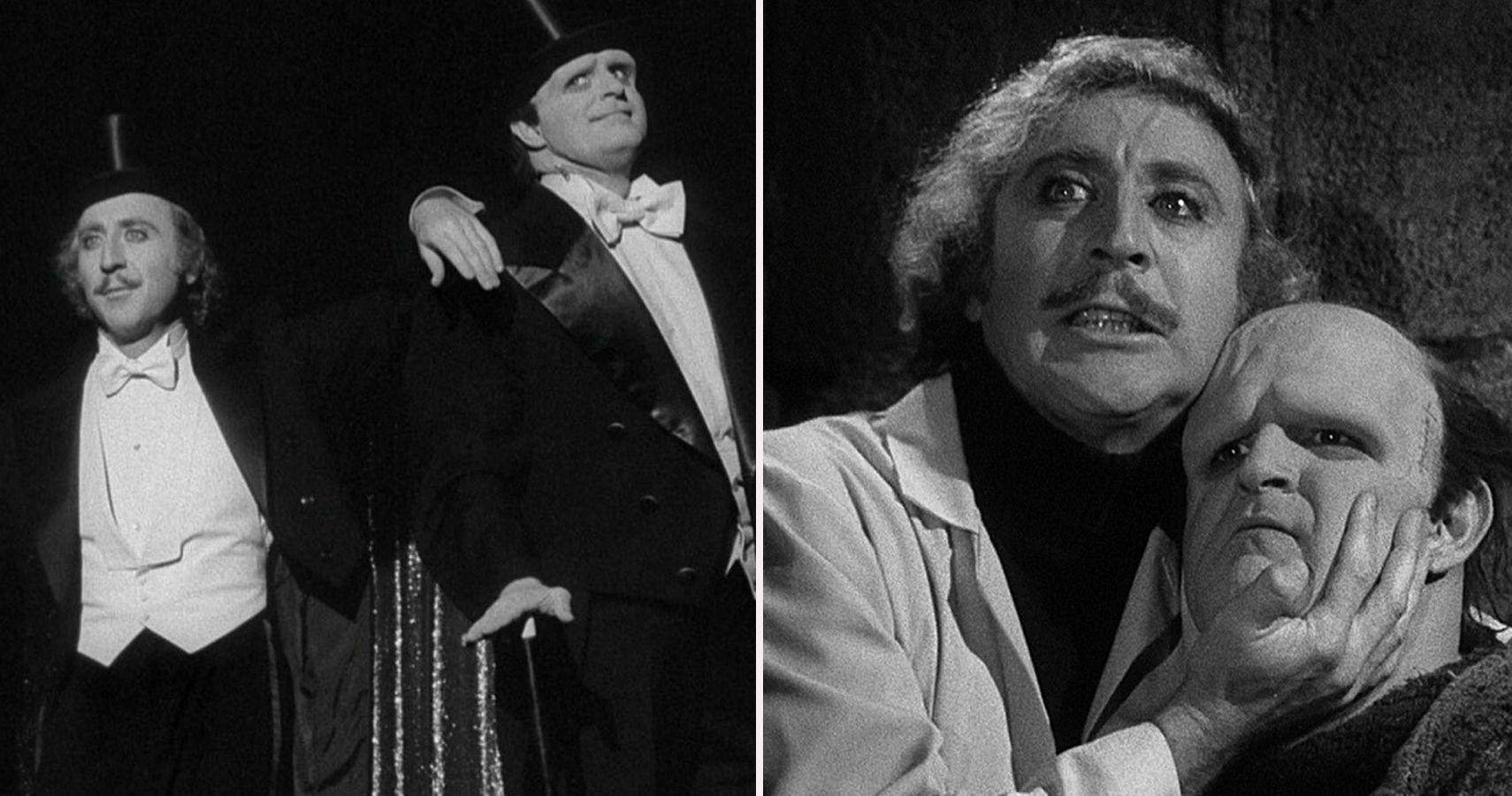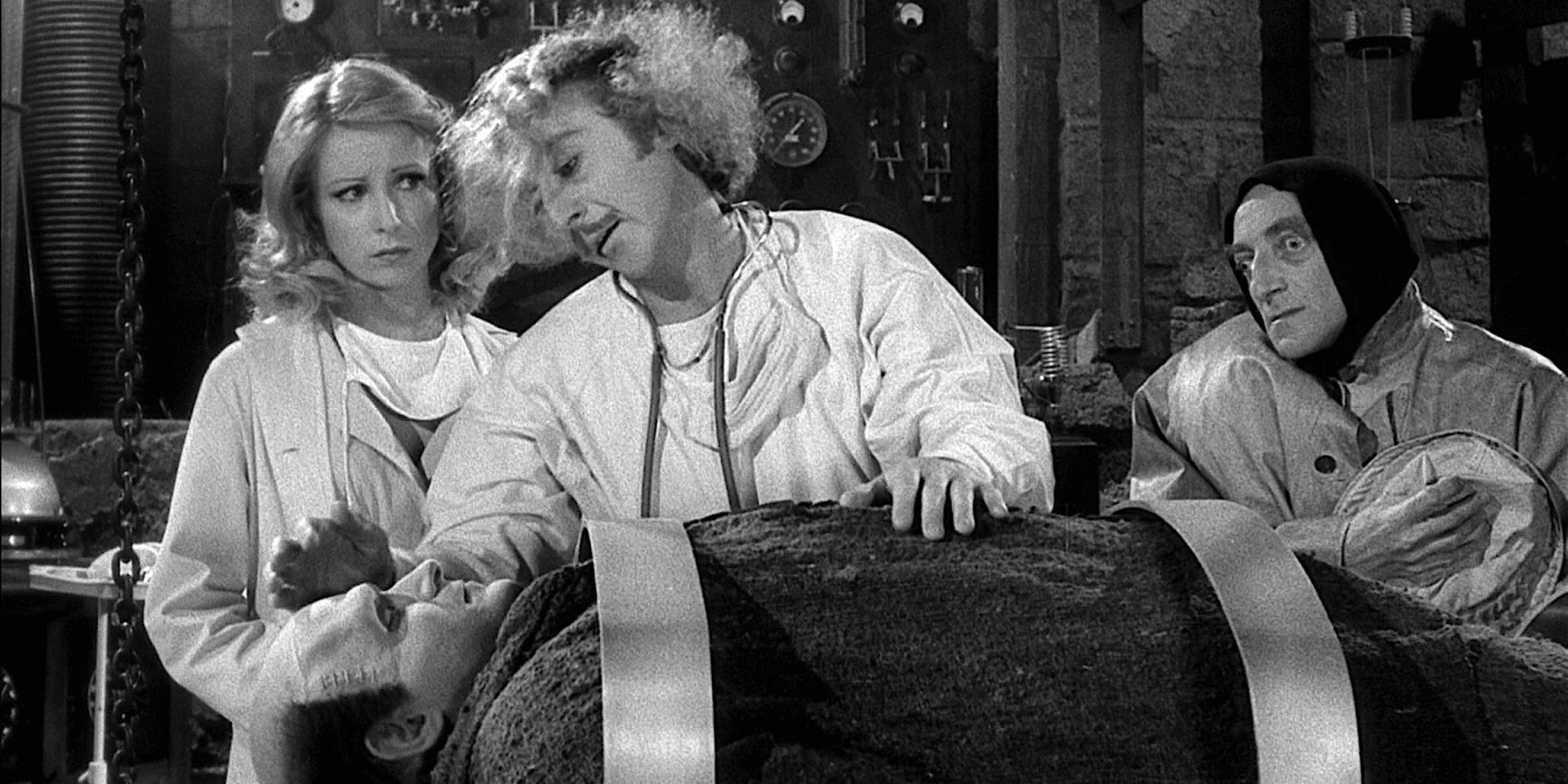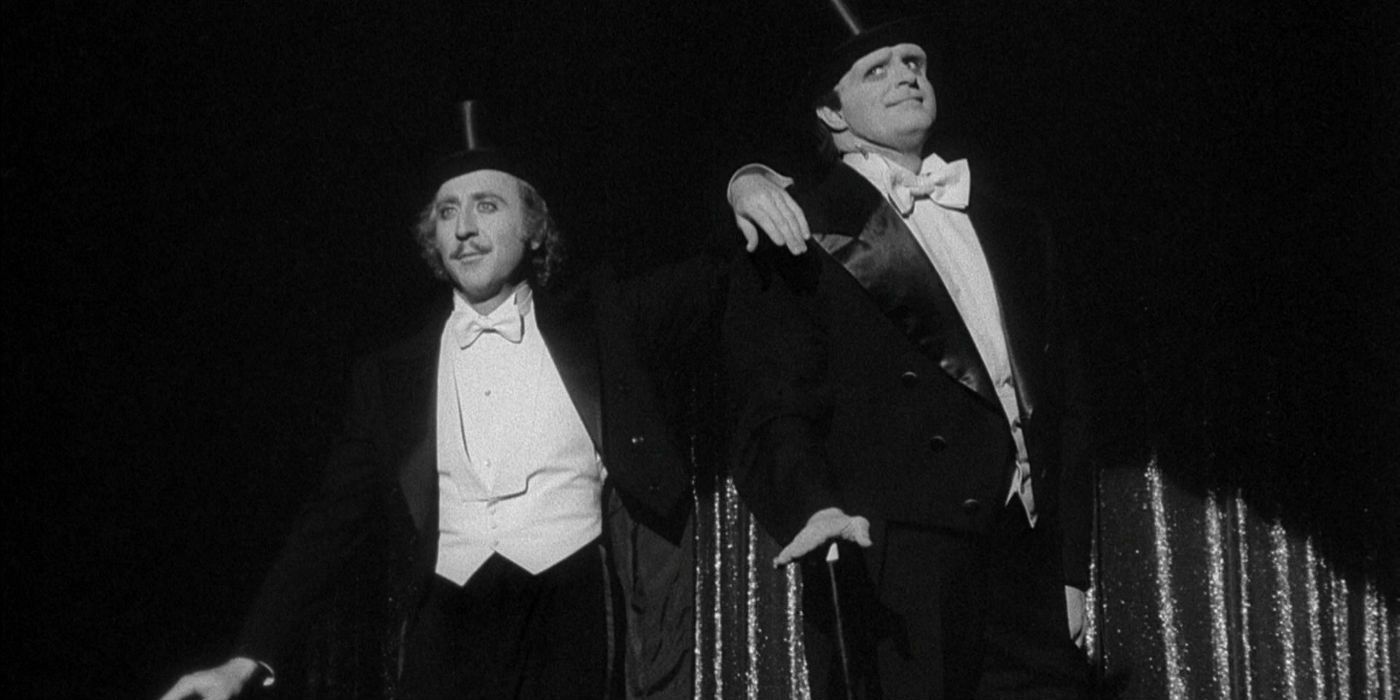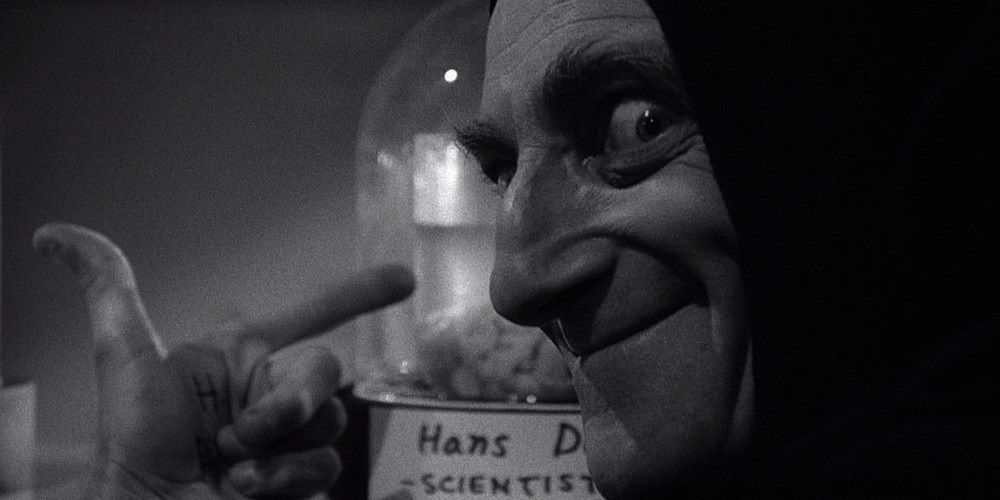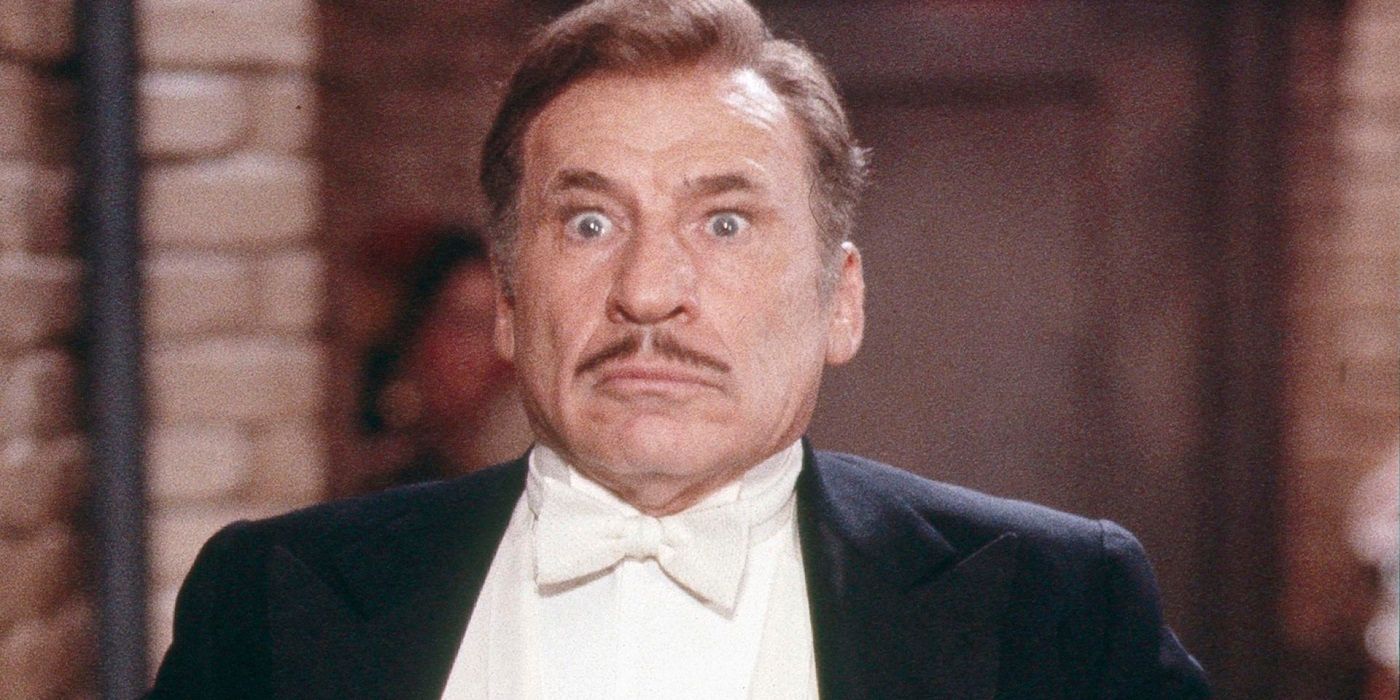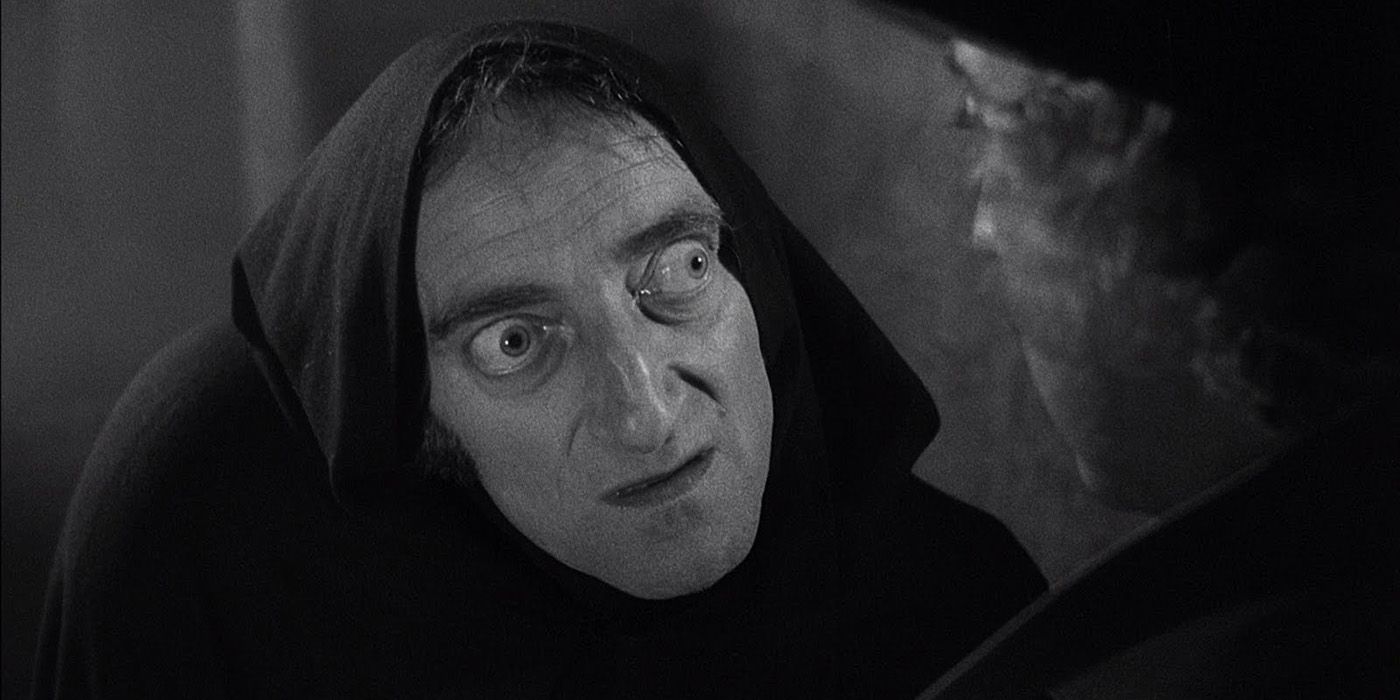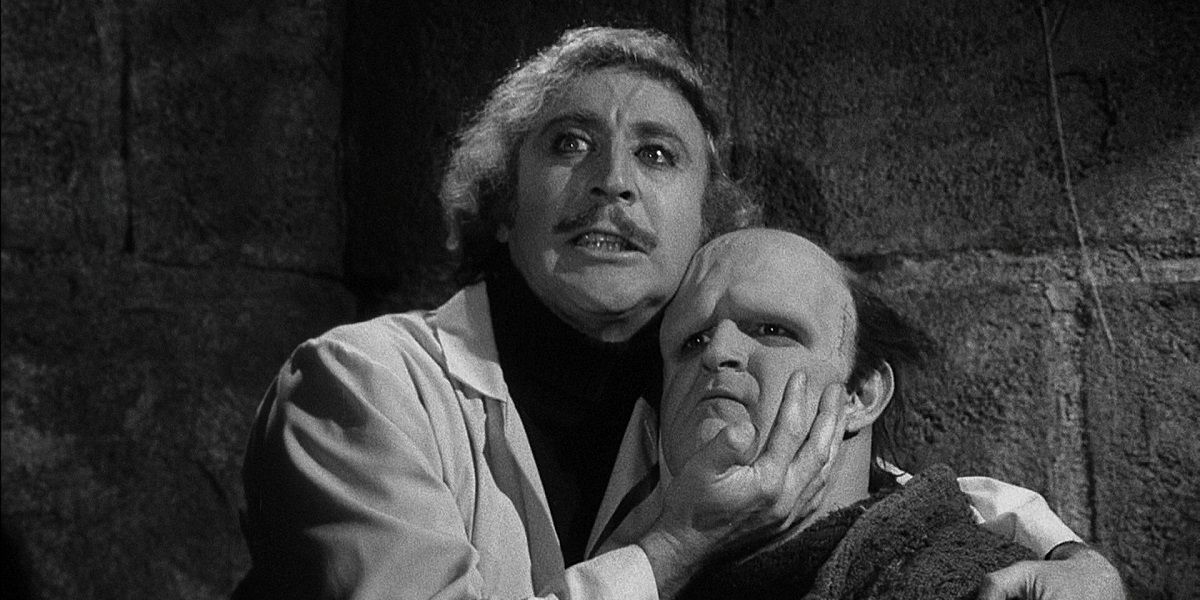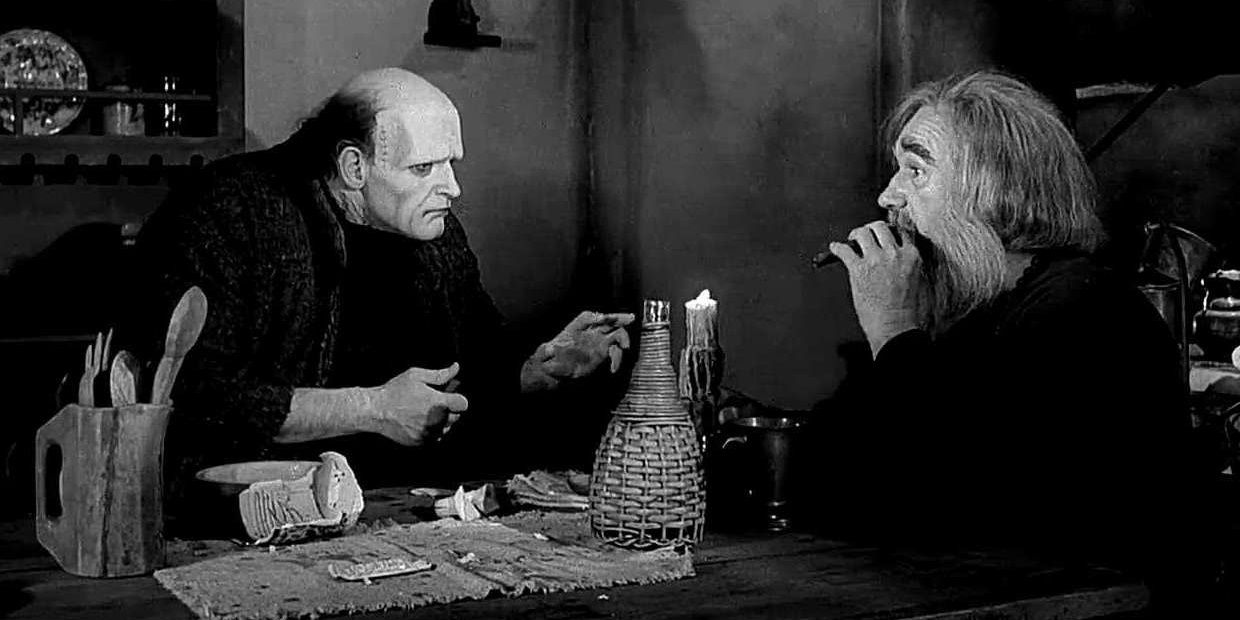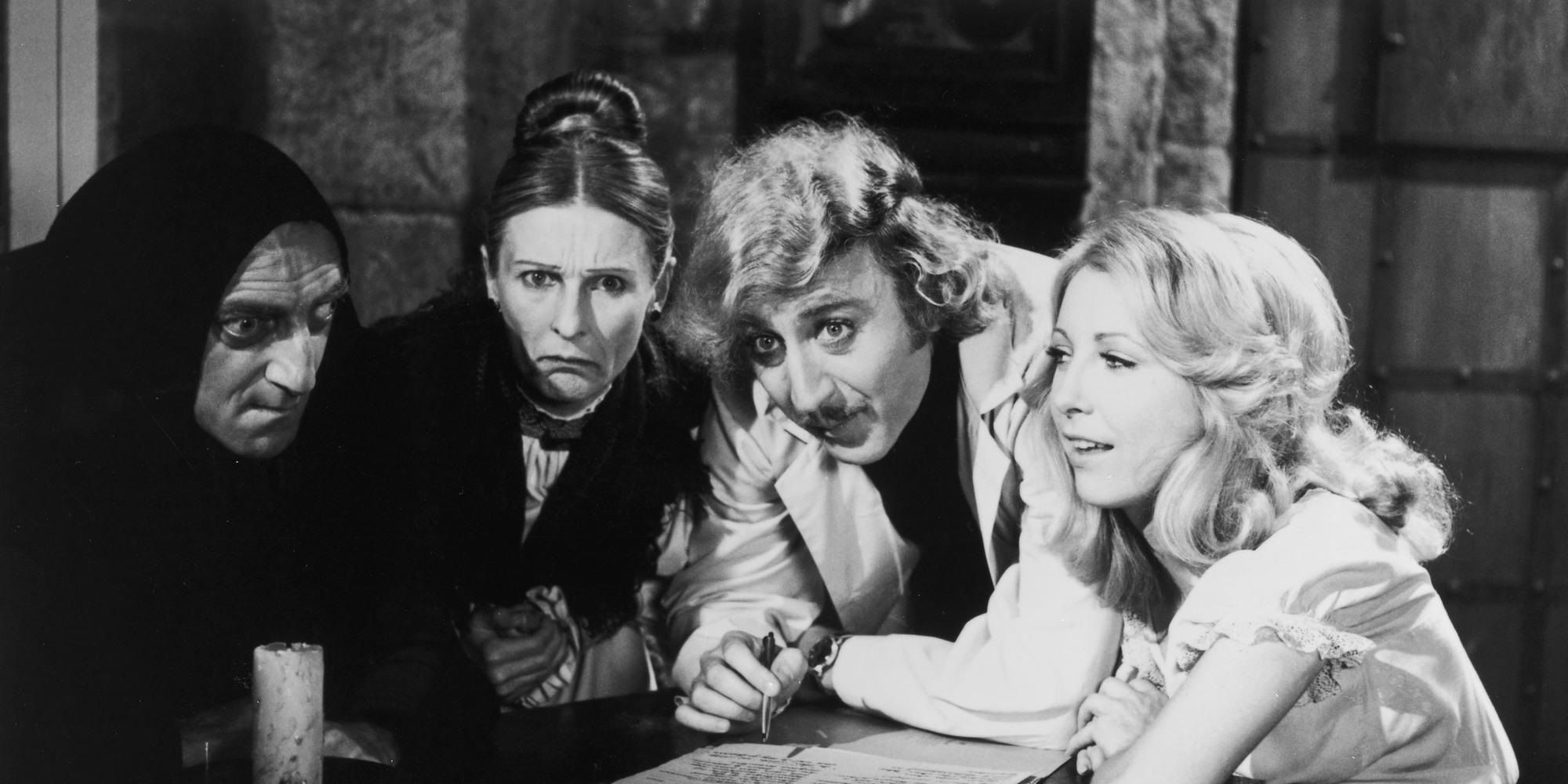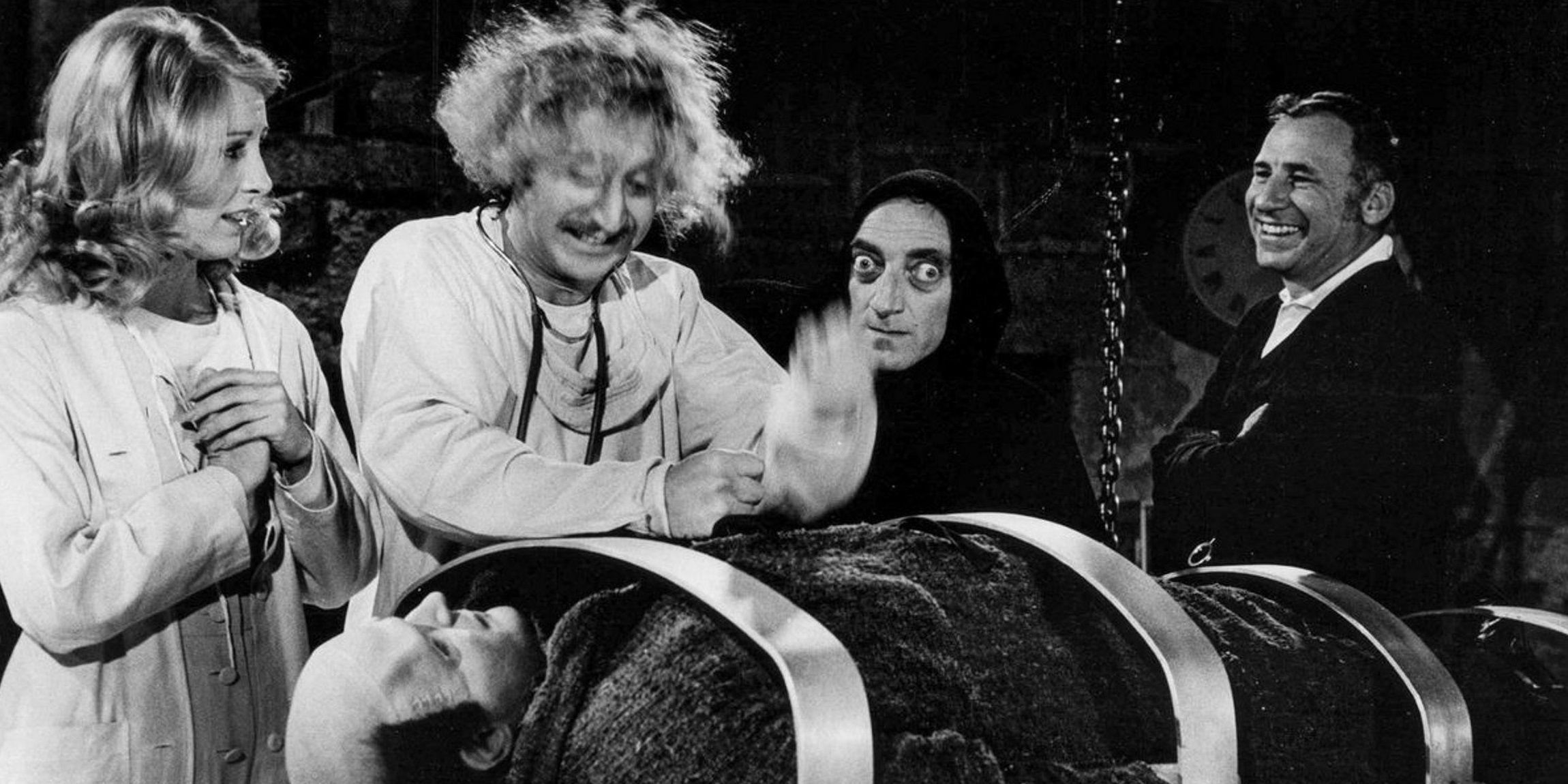Back when spoof movies were actually funny, because they were well-written and well-acted, Mel Brooks joined forces with Gene Wilder to deliver Young Frankenstein, a parody with iconic source material (Universal’s monster movies) and a hilarious premise (Victor Frankenstein’s grandson wants nothing to do with his crazy family in his quest to be taken seriously in the world of science).
Although he doesn’t consider it to be his funniest film, Brooks does believe that Young Frankenstein is his finest film. Wilder said it was his favorite of his own movies, too. And that’s no fluke – the movie was meticulously crafted down to the last detail. So, here are 10 behind-the-scenes facts about Young Frankenstein.
The original idea was conceived by Gene Wilder
It was Gene Wilder who came up with the initial premise for Young Frankenstein. Mel Brooks had enjoyed a string of hits spawned from his own ideas, so Wilder was skeptical that he would even consider directing a movie that he didn’t come up with but he tried his chances anyway.
Brooks initially showed no interest. However, Wilder brought the idea up again over coffee during production on Blazing Saddles. This time, he explained the joke of the movie, that the character would be Victor Frankenstein’s grandson trying to escape the family name, and Brooks liked it. So, the pair started working on the screenplay.
Peter Boyle had to do the “Puttin’ on the Ritz” scene off-the-cuff
The “Puttin’ on the Ritz” scene, in which Dr. Frankenstein presents his monster to the scientific community with a dance routine, is one of the most iconic and pivotal moments in Young Frankenstein. But when the filmmakers were planning it, they had no idea what the monster was going to say when it came to the song’s actual lyrics.
Peter Boyle had to decide what to do in the moment, and he let out a strained version that sounded something like, “Puuu-in’ un da Reeez!” It immediately felt right, so that was what the producers went with and they kept rolling.
Mel Brooks wanted to cut the “Walk this way” gag
Igor telling Dr. Frankenstein to “walk this way,” meaning to walk in the same hunched style as him, isn’t just one of the most memorable gags from Young Frankenstein; it’s one of the most memorable gags from Mel Brooks’ entire oeuvre. But during the editing process, he found it to be corny and wanted to cut it.
When he tested it, however, much to his surprise, the “Walk this way!” gag brought the house down, so he left it in, and it became one of his defining cinematic moments. It even inspired Aerosmith to write their iconic classic “Walk This Way” after they took a break from recording an album to see the movie.
Props from the real Frankenstein movies were used
All of Dr. Frankenstein’s electrical equipment in Young Frankenstein was taken directly from Universal’s own Frankenstein movies. While he was prepping the movie, Mel Brooks found out that Kenneth Strickfaden, the revolutionary electrician who had created all the props for the old movies, was still alive and living in L.A., so he went to visit him.
It turned out he’d held onto all the old props, so Brooks made a deal to rent them all from Strickfaden and also give him screen credit for creating them. Strickfaden had never gotten full recognition for his work, so this was a really sweet thing for Brooks to do.
Gene Wilder wouldn’t let Mel Brooks be in the movie
Mel Brooks usually appears in his own movies in small, but pivotal roles, like the Governor in Blazing Saddles, or in multiple supporting roles, like Yogurt and President Skroob in Spaceballs. However, Gene Wilder wouldn’t let the director appear in Young Frankenstein.
It was actually one of his conditions when they first made the deal to make the film. According to Brooks, Wilder told him, “You have a way of breaking the fourth wall, whether you want to or not. I just want to keep it. I don't want too much to be, you know, a wink at the audience.”
Marty Feldman ad-libbed Igor’s shifting hump
Throughout Young Frankenstein, Igor’s hump moves around, hopping all over his back from scene to scene. This gag was improvised by Marty Feldman, who had been secretly moving the hump around between takes and scenes for days before the crew actually caught on.
Feldman had ad-libbed the gag as a practical joke, but Mel Brooks enjoyed it so much that he incorporated it into the script and it became one of the movie’s funniest running gags. It adds another layer of comedy to the movie. While the dialogue and plot themselves are hilarious, Igor’s shifting hump is nice meta icing on that comedy cake.
Peter Boyle met his wife on the set
While it feels as though no one other than Peter Boyle could’ve played Frankenstein’s monster in this movie, he was apparently only cast because Boyle shared an agent with Gene Wilder and that agent had a deal with the studio. (That might just be hearsay, of course.) But it would appear that Boyle was destined to work on the film, because he met his future wife, Loraine Alterman Boyle, on the set of Young Frankenstein.
She was writing for Rolling Stone magazine at the time, and got sent to the set of Young Frankenstein to report on it, which is how she met her husband – he was playing the monster.
Gene Hackman improvised the Blind Man’s “espresso” line
Pretty much singlehandedly creating the uncredited cameo (leading to Will Ferrell’s scene in Wedding Crashers, Bill Murray’s scene in Zombieland and Cate Blanchett’s scene in Hot Fuzz), Gene Hackman appears in one scene in Young Frankenstein as “the Blind Man.”
Hackman improvised his line, “I was gonna make espresso,” and the shot immediately fades to black, because the entire crew erupted into uncontrollable laughter as soon as he said it. Since it was such a flippant line with such spontaneous delivery, only that first take captured the hilarity of it, so it was the one that needed to be used.
Mel Brooks changed studios to keep the movie in black-and-white
When Columbia Pictures executives, who had been initially financing and producing Young Frankenstein, found out about Mel Brooks’ intentions to shoot the whole thing in black-and-white, they objected. But Brooks was determined to make it black-and-white, so he ditched Columbia and took the project to 20th Century Fox, where they were happy to shoot the movie this way.
Shooting it in black-and-white should’ve been a no-brainer for studios, really. The movie is both a parody of and homage to Universal’s old monster movies, including Frankenstein, and they were all in black-and-white, so it wouldn’t have felt right if Young Frankenstein wasn’t the same.
Gene Wilder couldn’t keep it together during filming
Gene Wilder apparently couldn’t keep a straight face during any of his takes. He would always crack up at some point, and certain shots reportedly had to go through over fifteen takes before Wilder could get through them without laughing. And since he was working behind the camera as well as in front of it, according to Cloris Leachman, nothing was done to discipline him and this went on for the entire production.
While it might have gotten annoying for the actors repeating scenes over and over again and the boom operators with tired arms, frankly, if you’re not cracking up during production of a comedy, then something’s probably going very wrong.

